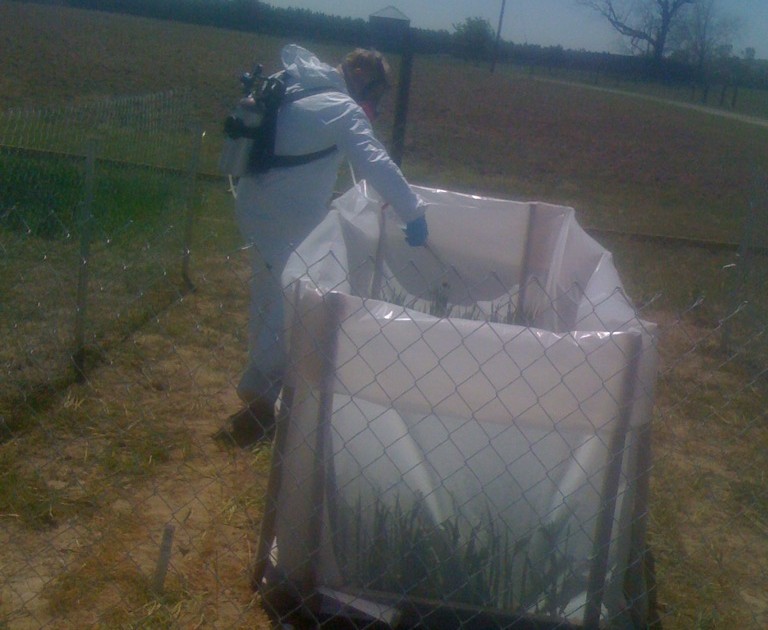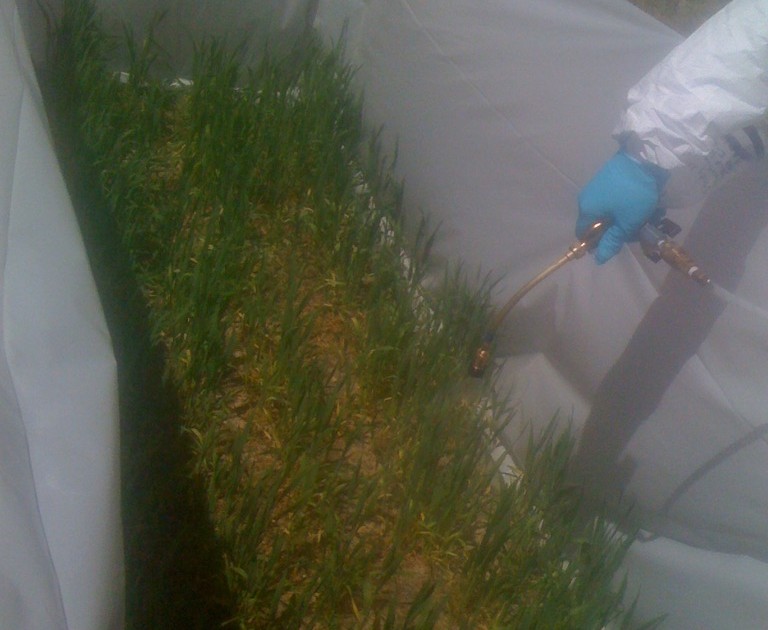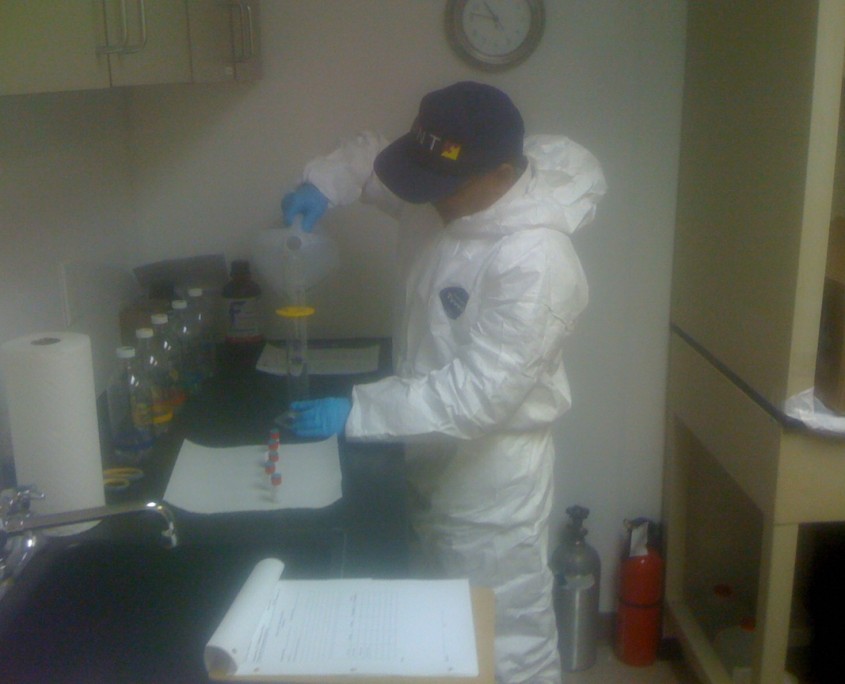Background
In 1992, Bernhardt C. Warren started Applied Environmental Consulting, Inc. (AEC) to provide health physics consulting services to the nuclear industry. These services included:
- General health physics consulting
- Negotiation of concerns with regulatory agencies
- Dosimetry advice and dose assessments
- ALARA (As Low As Reasonably Achievable) determinations
- Creation of procedures and applications for radioactive materials licensing activities
- Audits and assessment of licensed activities
- Investigation of lost source concerns and potential doses to the public
- Packaging and transportation of radioactive and hazardous materials
- Radiological consulting for decommissioning sites
Meet Our Team
Ben Warren
Bernhardt “Ben” Warren is the president and founder of Applied Environmental Consulting, Inc. which started in 1992. He has a B.S. degree in Biology from Florida Southern College, completion of 10 weeks advanced training in health physics from the Oak Ridge Associated University (comparable to a M.S.) and an MPA from Florida State University. He was Vice President of Perma-Fix Environmental Services, Inc., a nuclear and hazardous waste treatment company which was formerly, Quadrex Environmental Company. Ben spear headed the obtaining the first mixed waste permit for treating radioactive and hazardous wastes in the country. He was a Certified Hazard Control Manager, master level (1985) and a Certified Hazardous Materials Manager, master level (1985) and Manager of the Licensing Section of the Office of Radiation Control of the Department of Health & Rehabilitative Services in the State of Florida. He’s a retired LTC of the USAR in the Medical Service Corps. Finally, he developed a 40-hour Advanced Radiation Protection training course for the Florida Institute of Phosphate Research which was provided to the International Atomic Energy Agency to share with their clients around the world.
George Harder, Ph.D., P.E., J.D.
George Harder, Ph.D., P.E., J.D. is a registered Professional Engineer in the State of Florida and holds a doctorate engineering from the Department of Environmental Engineering Sciences at the University of Florida and a Bachelor of Engineering degree from the University of Florida in Electrical Engineering. He has worked on decommissioning projects that include two optical facilities using thorium coatings and tritium compounds for luminescence, several uranium recovery and “caking” facilities, other industrial facilities with TENORM contamination and scaling, stabilizing and decontaminating technicium-99 contaminated nitric acid, a beryllium-10 material decontamination and carbon-14 clean-up. George was Project Manager for a Florida Institute of Phosphate Research study that characterized TENORM-contaminated objects in the phosphate industry including mass by radionuclide for waste and salvage streams and changes in activity concentrations for natural uranium and radium-226. He was also Project Manager for decontamination of mixed waste at a large government facility while working as RSO for Perma-Fix of Florida. George excels in coordination of resources and personnel in field situations, and development of specialized software and electronics. George is also a licensed attorney in the State of Florida.
Caren Mastroianni
Caren Mastroianni is responsible for communication and technical support for AEC. Her background in Marketing with a specialization in Advertising and Promotions from Pace University equips her with skills in crafting effective communication strategies. This blend of marketing expertise and technical understanding is valuable in ensuring clear and impactful communications for AEC.
Mining
Those companies involved in mining have a unique function in that they are extracting naturally-occurring radioactive materials from the earth and concentrating it in their chemical processes when processing the ores.
Phosphate Industry
AEC has been providing professional services to the phosphate industry since 1992. These companies are on annual contracts performing full-service health physics support. There are many services licensing and regulatory functions. AEC has continued to provide on-site radiological support services for the radioactive materials, assisted in preparing and maintaining a broad industrial license and provided quarterly consulting services for the Radiation Safety Committee. One license has expanded from four to twelve sites under the broad license during the time of contractual relationship. The phosphate companies are authorized for the possession of fixed industrial gauges containing radioactive materials and enhanced naturally-occurring radioactive materials.
During this contracting history, the decommissioning of their uranium recovery operations was unique. Decommissioning is beyond the simple closing of the plant. The company is not released from the regulatory restrictions until the license is terminated by the regulatory agency. Uranium recovery is the licensing process that allows the phosphoric acid from the fertilizer production to be processed through a side-circuit to remove the uranium. Then, the uranium-depleted phosphoric acid is returned to the fertilizer production plant to continue the process to make fertilizer. The demolition and closing of these plants occurred when the price of uranium was no longer competitive. This activity included providing the pre-decommissioning survey and developing the decommissioning plan according to regulatory guidelines. The decommissioning plan included the scope and degree of demolition of the facilities by contractors decided by the clients, negotiating the conditions with the regulatory agency, assisting the companies in reviewing demolition contractors, providing training to the site demolition contractors, providing oversight of the procedures and releasable items, performing a post-survey, and preparing the final report. This was used to terminate the radioactive materials license and release any financial bonding required by the State of Florida.
To date AEC has directly coordinated the decommissioning of four uranium recovery plants.
The main phosphoric acid plants that transform the ore to fertilizer also go through decommissioning when their useful life is complete. Since the phosphoric acid plants chemically transform the ore, it enhances and concentrates the naturally-occurring radioactive materials in the ore on the surface of the tanks, pumps, piping and valves to a regulatory concentration called Technologically-Enhanced Naturally Occurring Radioactive Materials (TENORM). In order to obtain relief from the license, a decommissioning plan, similar to the uranium recovery decommissioning, must be completed. The dismantled equipment requires surveying by company personnel training by AEC prior to release for metals salvage. Much of the contaminated equipment is decontaminated on-site prior to obtain releasable status. There are several technologies to include water and grit blasting requiring personal protective equipment by the workers. All these activities required training, technical consulting and support provided by AEC. After demolition of the site, the site is surveyed, sampled and a report completed for the regulators to review and approve.
To date, AEC has been directly involved in the decommissioning of four phosphoric acid sites.
Rare-earth Minerals
AEC provided professional services to the rare-earth industry since the mid-90s. Services included performing and assessing doses from the respective applications within a licensed mineral extraction (titanium) facility. This included performing a baseline assessment of the site, the potential exposure pathways using air sampling and area monitors, particle size assessment, worker interviews, and Time & Motion studies. Results were provided to the company’s management as to their potential areas of concern and recommendations to minimize worker exposures using administrative and mechanical controls. Services also included performing the renewal of the radioactive materials license. Then began of the decommissioning process of performing a pre-demolition survey, preparing a decommissioning plan, surveying items to be released from the site and sampled the site after the facility was demolished.
Kaolin Mining
AEC has been providing professional services to the kaolin industry since 1992. The kaolin industry mines kaolinite clays for the production of a fine white substance used in many products, such as paint pigments, toothpaste and the white slickness in paper. These companies are on annual contracts in which AEC performs full-service health physics support. These clients are authorized for the possession of fixed industrial gauges containing radioactive materials and enhanced naturally-occurring radioactive materials.
When these plants come to the end of their useful life, decommissioning is required. Similar to the phosphate industry, these plants must go through the regulatory rigors of the decommissioning process.
The decommissioning of two sites in Georgia and one in SC are complete.
Client Groups
In addition to gauges and TENORM clients, AEC consults the industry that possesses and uses radioactive materials in a myriad of methods. AEC has also provided research in the better understanding of the risk of handling the materials.
Research Companies
Clients use radioactive materials tagged to organic compounds which are used as tracers. The purpose is to identify the efficacy and tenaciousness of the research compound. For example, herbicides and pesticides need to be tested to assure that they are effective and do not linger in the environment to assure no more environmental problems, like DDT. After administration of the tracer to a plant or soil, samples are taken to identify the extent of uptake and persistence. These results are provided the product manufacturer who submits the report to the federal agencies to obtain permits for distribution to the general public. The primary radioactive material is carbon-14 tagged to an organic compound.
To date decommissioning of plots where radioactive materials have been administered have been completed in Florida, Georgia, Texas, Illinois, Mississippi and California.
Department of Defense Contractors
AEC provides licensing and health physics support to several companies who are contractors to the Department of Defense. The use of radioactive materials is primarily the use of small amounts of discrete sources used in the tactical equipment used by the military.
Veterinary Hospitals
AEC provides licensing, radiation protection training and general health physics support to veterinary hospitals that treat cats with I-131. Cats with overactive thyroids are not very good pets as their metabolism is too high driven by an overactive thyroid. The injection of I-131in the cat allows the radioactive iodine to be concentrated in the thyroid and reduce the metabolism in the cat. The injection, care, handling of the kitty litter and related paraphernalia, monitoring doses to the workers, and contamination control of the laboratory until the cats are ultimately discharged are the primary issues that must be approved through a license prior to receiving radioactive materials.
Radiation Service in the Industry
AEC has provided the following radiation services:
- Site assessment surveys of raw land to land reclaimed during the mining operations. The purpose is to identify the background levels and if there are any elevated levels potentially needing remediation prior to construction of major projects, such as golf courses and resorts.
- Dose reconstruction for workers in a salvage yard due to a source being “lost” from a licensee. Performed interviews with the potentially affected employees, performed Time & Motion studies to determine doses to all the handlers and drivers and provided a final report to the licensee.
- Health physics services, licensing and As Low As Reasonably Achievable (ALARA) assessments to a company engaged in the manufacture and distribution of brachytherapy implants containing I-125 prostate seeds.
- Licensing and health physics consulting services to a laboratory using krypton-85 (noble radioactive gas) in specialty lamps, including commercial aircraft. AEC assisted client obtain radioactive materials license and a federal exempt distribution license.
- Obtaining a license for a major metals smelting company after a cesium-137 industrial gauge was inadvertently smelted and contaminated the plant. After shutdown and decontamination with a cost of over $10MM, a license was required for the residual radioactivity that could not be removed.
- Radon studies for plant having phosphogypsum stacks in the phosphate industry requiring closure and periodic radon testing. In addition, radon tests were performed to determine worker exposure in mining tunnels where background radiation is release and accumulates. AEC provided recommendations as to the mitigation of the air concentrations.
- Radioactive waste management consulting to a large company with over 40,000 contaminated and rusted 55 gallon drums as to a viable and competitive disposal option.
- Facility design, licensing and regulatory support for a company beginning a TENORM decontamination facility for the industry.
- Other site remediation and decommissioning projects. In addition to those described above, AEC has performed the decontamination and decommissioning of several sites with various types of radionuclides, to include: thorium oxide and tritium. This included remediation of laboratory facilities to the removal of soils and obtaining the final decommissioning approval. Of these clients (3) the decommissioning was completed in Florida.
Florida Institute of Phosphate Research
AEC conducted a multi-year research project to determine external and internal radiation doses to workers in the Florida phosphate industry due to Technologically-Enhanced Naturally-Occurring Radioactive Materials (TENORM). The study included a comparison of external dosimetry methods using pressurized ion chambers, scintillation survey meters, optically stimulated luminescent dosimeters, and lithium fluoride TLDs. Inhalation doses were estimated using air samplers in working zones and published dose conversion factors. Total effective dose equivalents were calculated using measured parameters and uncertainty analysis methods including Monte Carlo techniques to generate dose distributions. A formal document was published and is available under the Florida Institute of Phosphate Research – publication number 05-046-155.
In addition, AEC performed a study to provide information as to the characterization of objects contaminated with TENORM within the industry. Technical enhancement is the separation of the principal radionuclides, namely uranium and radium-226, with the resultant material not in equilibrium. At the time this study was performed, TENORM was currently not officially defined by most of the regulatory agencies nor are compliance criteria established. Seven facilities participated in the study that lasted twelve months. Current practices at each site were reviewed with results being anonymous. Each site maintained a “lay-down” area where items were collected, segregated and surveyed prior to determining the disposition. Samples were taken from debris, metals, and other items destined for landfills, salvers and phosphogypsum stacks. Collective sample analyses indicated the enhancement being 72% favoring uranium and 25% favoring radium. Thirty-five percent of the uranium samples had activity 10 times greater than the radium activity. Over 50% of the discarded items went to salvers, of which 66% had background radiation levels. One hundred tons of debris destined for off-site disposition consisted of approximately 4.5 millicuries of uranium and 8 millicuries of radium. One hundred thirty-six total samples were taken with detailed descriptions delineating identification, radiation levels, estimated mass and whether having fixed or removable contamination. A formal document was published and is available under the Florida Institute of Phosphate Research – publication number 05-059-191.
AEC’s founder developed a 40-hour radiation protection training program for the Florida Institute of Phosphate Research to use in conjunction with their partner, the International Atomic Energy Agency (IAEA). The IAEA is offering this training program to their clients in the world-wide phosphate production arena and associated disciplines.
Website Training Terms and Condittions
Click here to read our policies.




